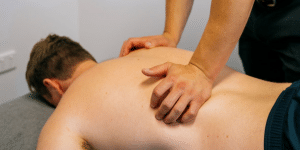12 Things You Need To Know About Incontinence

Healthy bladder and bowel habits can help you avoid bladder and bowel control problems such as incontinence. Incontinence can have a major impact on your quality of life. If you or someone you know is affected by incontinence it’s important to remember that:
- You are not alone – almost 4.8 million Australians are affected by incontinence
- It affects both men and women, regardless of your age or background
- It can be treated, managed, and in many cases, cured
What are we talking about?
Urinary leaking: A small amount or a large amount, on coughing, laughing, jumping, running, or because you just…can’t….. hold on long enough to get to the toilet!!
Overactive bladder: Needing to urinate more than 8 times during the day and more than once during the night.
Why does this happen?
Many factors contribute to the incidence of urinary incontinence or an overactive bladder. Childbirth is the most likely factor to contribute to symptoms and this is due to stretching and trauma to the muscles (the pelvic floor) that keep the bladder sealed as the baby moves down the birth canal. If these muscles are not re-trained to withstand pressures from above, small accidents such as leaking, may continue to occur when they are stressed. Young women with no children can also experience problems and this can be the result of repeated trauma to the pelvic floor muscles from activities such as impact sports, obesity, or chronic coughing.
How does my bladder work?
Your bladder is a muscular sac filled by the kidneys via tubes called ureters. When you sit on the toilet you relax your pelvic floor muscles and this tells the muscular sac to contract and squeeze the urine out.
What sensation and storage is normal for our bladder?
- Women urinate 6-8 times a day
- A healthy bladder can store 400-600 mLs overnight
- First desire to urinate is normally felt between 150 and 250 mLs bladder capacity
- Women usually pass around 300-350 mLs each time
What are my pelvic floor muscles and what do they do?
Your pelvic floor muscles are like a muscular sling or hammock that contract and tighten around your anal sphincter (back passage) and your bladder and vagina (front passage), to keep them closed until you feel the need to use the toilet. They also help to hold the bladder, vagina and uterus ‘high and dry’ and decrease the chance of a prolapse.

Types of urinary incontinence
There are three main types of urinary incontinence:
Stress Incontinence: Leaking of urine (even a small amount) with an increase in intra-abdominal pressure, for example coughing, sneezing, exercising or lifting.
Urge Incontinence: An overwhelming urge to pass water. “I need a toilet and I need it now”.
Mixed Incontinence: A bit of both types.
What puts me at risk?
- Childbirth and delivery factors: birth weight >3kg, a long pushing stage of the labour, or use of instruments (e.g. forceps) to deliver
- Constipation
- Overweight and obesity
- Chronic upper respiratory disease and smoking
- High impact recreational activity e.g. long distance running
- Recurrent urinary tract infections
What can I do to avoid this happening to me?
Take care of your pelvic floor – train your muscles to be strong in a variety of situations. Take care of yourself – eat well with plenty of fruit and vegetables to aid in healthy bowel movements, and keep your weight in a healthy range. Aim for 2L of fluid a day and minimise caffeine. Ensure healthy bladder habits – don’t go ‘just in case’. Hold off for a little bit after your first desire to void. Make sure your bladder is empty after going to the toilet.
Where are my pelvic floor muscles?
The easiest way to find your pelvic floor muscles is to sit on the toilet, empty your bladder and try and stop the stream of urine. Then start again. Be sure to only try this once a week or your bladder may change its emptying behaviour. Now position yourself in a relaxed, supported position, lying on your back is easiest. Squeeze the ring of muscle around your front passage as though you’re trying to stop the flow of urine. You should experience a squeezing and lifting sensation.
Now what?
Strengthening your pelvic floor muscles is much like strengthening any other group of muscles. You need to do exercises regularly. Start slowly and realistically. In a relaxed position, draw up your pelvic floor muscles and try and hold up to the count of 10. If you cannot hold the whole 10 seconds, remember where you can hold to and use this as your starting number. Try to repeat this lift up to 6 times. As you become stronger you will be able to hold longer and increase your repetitions and sets. Aim for three sets of exercises each day.
While doing your exercises, avoid:
- Holding your breath
- Pushing down as this will work against the pelvic floor muscles, rather than working for them! You can potentially do more damage than good if you are doing these exercises incorrectly
- Tightening your buttock and thighs
Do:
Make your exercises a part of your regular routine. Do them when:
- You finish on the toilet- squeeze and hold while washing your hands
- Cleaning your teeth
- Doing the dishes
- Sitting at a stop light
- While you’re waiting to pay for groceries
Most importantly, if you are having difficulty getting your pelvic floor muscles working or are noticing more leakage or a feeling of heaviness in your underwear it is really important to speak with a Women’s Health Physiotherapist who can assess your pelvic floor more closely.
For more information, please contact us here or book an online appointment






